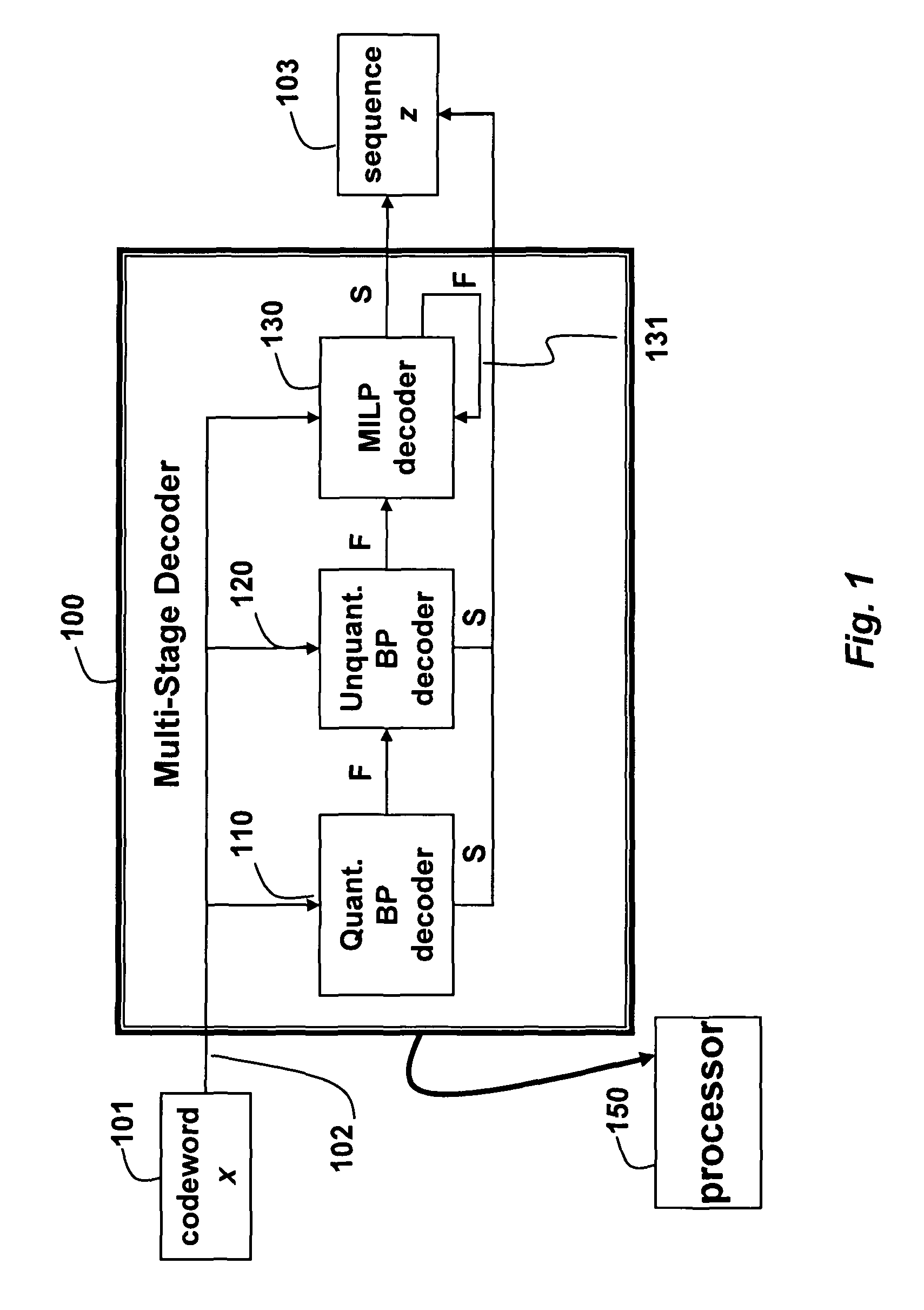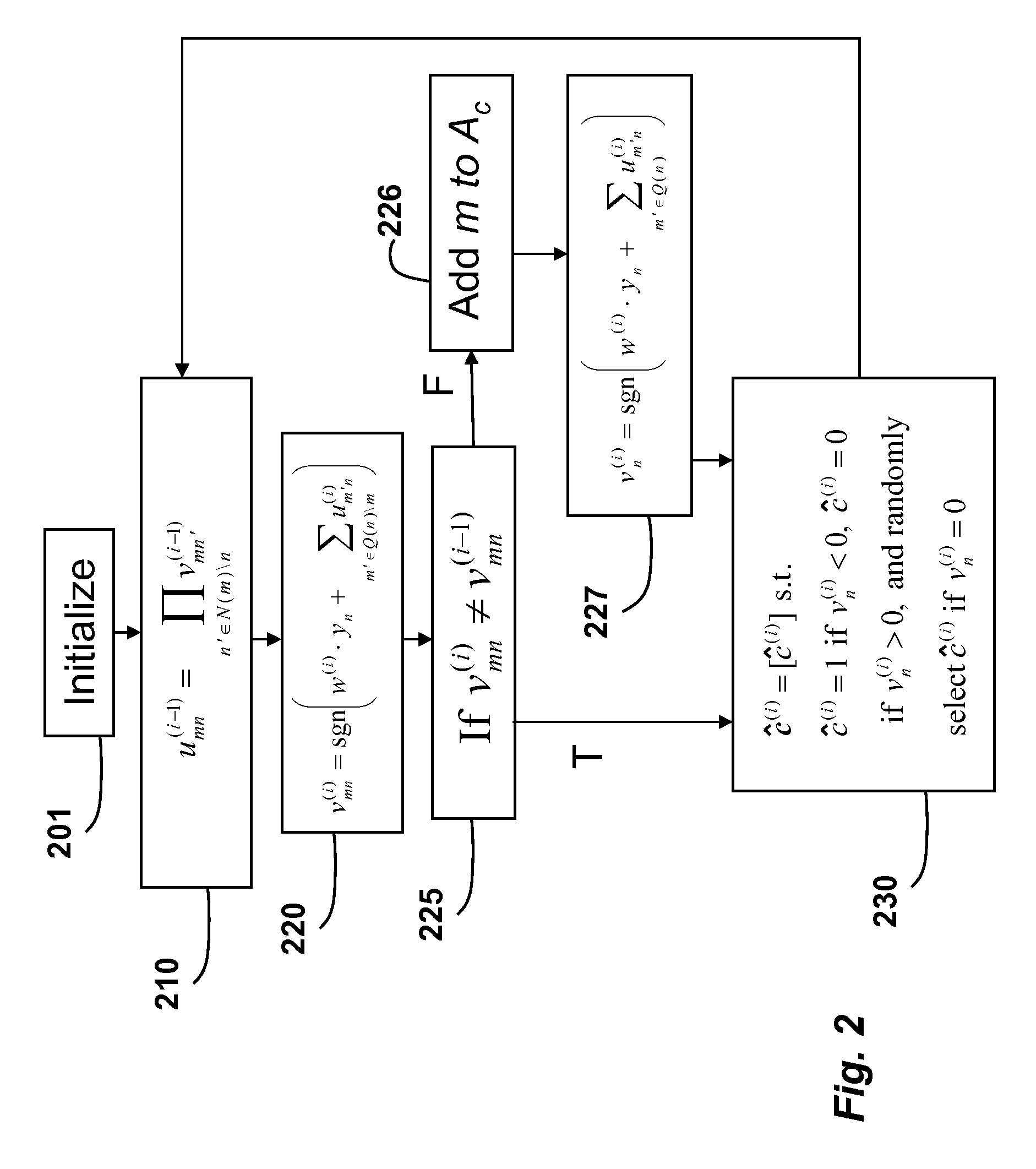Multi-stage decoder for error-correcting codes
a multi-stage decoder and error-correcting technology, applied in the field of decoding codewords, can solve the problems of maximum likelihood decoders that cannot be constructed for special classes of error-correcting codes, the difficulty of decoding corrupted messages, and the decoding method of error-correcting, etc., to speed up the decoding of ldpc codes, improve the wer of multi-stage decoders, and shorten the average decoding time
- Summary
- Abstract
- Description
- Claims
- Application Information
AI Technical Summary
Benefits of technology
Problems solved by technology
Method used
Image
Examples
Embodiment Construction
[0081]FIG. 1 shows a multi-stage decoder 100 for low-density parity-check (LDPC) codes according to embodiments of our invention. The decoder includes a quantized belief propagation (QBP) sub-decoder 110, an unquantized BP (UBP) sub-decoder 120, and a linear programming (LP) decoder or mixed-integer linear programming (MILP) sub-decoder 130, connected sequentially.
[0082]The multi-stage decoder 100 receives a codeword x 101 transmitted via a noisy channel 102. The sub-decoder 110 attempts to decode the codeword 101. If the sub-decoder 110 fails, then the sub-decoder 120 attempts to decode. If the sub-decoder 120 fails, then the sub-decoder 130 attempts to decode, until a termination condition in reached. The sub-decoders are arranged so that a next sub-decoder in the sequence has a slower processing time (T) and better word error rate (WER), than a previous sub-decoder, i.e., TQBPUBPMILP, and WERQBP>>WERUBP>>WERMILP.
[0083]A “decoding failure” indicates that the specified decoder fail...
PUM
 Login to View More
Login to View More Abstract
Description
Claims
Application Information
 Login to View More
Login to View More - R&D
- Intellectual Property
- Life Sciences
- Materials
- Tech Scout
- Unparalleled Data Quality
- Higher Quality Content
- 60% Fewer Hallucinations
Browse by: Latest US Patents, China's latest patents, Technical Efficacy Thesaurus, Application Domain, Technology Topic, Popular Technical Reports.
© 2025 PatSnap. All rights reserved.Legal|Privacy policy|Modern Slavery Act Transparency Statement|Sitemap|About US| Contact US: help@patsnap.com



